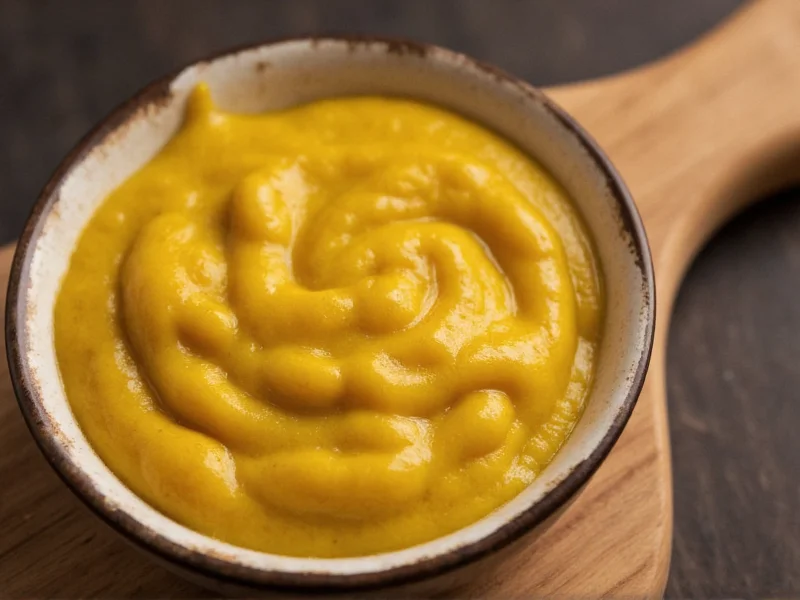When you squeeze that familiar yellow bottle or open a jar of Dijon, you're experiencing one of the world's oldest condiments. The magic begins with mustard seeds, which contain an enzyme called myrosinase and a compound named sinigrin. When these components mix with liquid, a chemical reaction creates the characteristic pungent flavor we associate with mustard.
The Science Behind Mustard's Heat
The heat level in mustard depends on several factors including seed type, liquid acidity, and preparation method. Yellow mustard seeds produce milder heat than brown or black seeds. The pH level of the liquid affects the enzymatic reaction—more acidic liquids like vinegar create a sharper initial heat that diminishes over time, while less acidic liquids like wine produce a slower-building, longer-lasting heat.
Interestingly, mustard's heat isn't permanent. Unlike chili peppers whose capsaicin creates lasting heat, mustard's pungency comes from volatile compounds that dissipate over time. This is why freshly prepared mustard is hottest initially, then mellows as the compounds evaporate.
Mustard Seed Varieties Explained
| Seed Type | Color | Heat Level | Common Uses |
|---|---|---|---|
| Yellow/White (Sinapis alba) | Pale yellow | Mild | American yellow mustard, mild table mustard |
| Brown (Brassica juncea) | Brown | Moderate to hot | Dijon mustard, spicy brown mustard, Chinese mustard |
| Black (Brassica nigra) | Dark brown to black | Very hot | Traditional European mustards, Indian cooking |
Traditional Mustard Ingredients Across Cultures
While the basic components remain consistent globally, regional variations showcase mustard's versatility. French Dijon mustard traditionally uses verjus (unripe grape juice) or white wine instead of vinegar, creating a complex flavor profile. German mustards often include additional spices like garlic and turmeric. In Indian cuisine, mustard seeds are frequently used whole or cracked in tempering oils rather than processed into a paste.
Many artisanal producers now experiment with unique ingredients to create distinctive mustards. Popular variations include honey mustard (with honey), beer mustard (using craft beer), and fruit-infused mustards (with apricot, raspberry, or apple). These specialty mustards maintain the essential mustard seed foundation while adding complementary flavors.
How to Make Mustard from Scratch
Creating homemade mustard allows complete control over ingredients and flavor profile. The basic process involves:
- Grinding mustard seeds to your preferred consistency (fine for smooth mustard, coarse for whole grain)
- Mixing with liquid (vinegar, wine, or water) and letting sit for 10-15 minutes to activate enzymes
- Adding salt, sweeteners, and spices to taste
- Allowing the mixture to rest for 1-2 days for flavors to develop
The resting period is crucial—mustard's flavor continues to develop as the enzymatic reaction progresses. For milder mustard, use hotter liquids which deactivate the enzymes more quickly. For hotter mustard, use cooler liquids and allow longer resting time before bottling.
Why Is Mustard Yellow?
The bright yellow color associated with American-style mustard comes primarily from turmeric, a spice added for both color and subtle flavor. Traditional European mustards made solely from brown or black seeds range from beige to dark brown. The distinctive yellow hue became popular in the late 19th century when American producers began adding turmeric to create a more vibrant, consistent color that appealed to consumers.
Storage and Shelf Life Considerations
Properly prepared mustard has excellent shelf stability due to its acidic nature. Commercial mustards typically contain preservatives that extend shelf life to 1-2 years. Homemade mustard without preservatives remains fresh for 2-3 months when refrigerated. The heat level of mustard gradually decreases over time as the volatile compounds dissipate, so freshly made mustard will always have the most pronounced flavor.
Frequently Asked Questions
What gives mustard its distinctive heat and pungency?
Mustard's heat comes from a chemical reaction between enzymes in mustard seeds and liquids like water or vinegar. When mustard seeds are crushed and mixed with liquid, the enzyme myrosinase reacts with compounds called glucosinolates to produce pungent isothiocyanates. This reaction creates the characteristic sharp flavor that distinguishes mustard from other condiments.
Why does some mustard taste hotter than others?
The heat level in mustard depends on several factors: the type of mustard seed used (black seeds are hottest, followed by brown, then yellow), the acidity of the liquid (more acidic liquids create sharper initial heat), and preparation method. Freshly made mustard is hottest initially, then mellows over time as volatile compounds dissipate.
Can you make mustard without vinegar?
Yes, mustard can be made with various liquids including water, wine, beer, or even non-alcoholic beverages. Vinegar is commonly used because its acidity helps preserve the mustard and affects the enzymatic reaction that creates heat. Using wine creates a more complex flavor profile with slower-developing heat, while water produces the hottest initial reaction but shorter shelf life.
What's the difference between Dijon mustard and regular yellow mustard?
Dijon mustard is made primarily from brown mustard seeds and uses verjus or white wine instead of vinegar, resulting in a more complex, sharper flavor. Yellow mustard uses milder yellow/white mustard seeds, vinegar, and turmeric for color, creating a brighter, tangier profile. Dijon mustard also typically contains no flour or starch, making it smoother than some yellow mustards.











 浙公网安备
33010002000092号
浙公网安备
33010002000092号 浙B2-20120091-4
浙B2-20120091-4